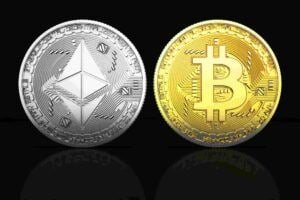Exchange-traded funds (ETFs) have been recommended for several years as an exciting investment model for normal investors who do not have a larger budget. According to investment advisors, the fund models offer higher returns with comparatively low investment risk compared to many other stock market products. The relatively low financial requirements for entry are another advantage that is mentioned in guides about exchange-traded (index) funds. This is exactly what ETFs are translated into in German. The following aspect is emphasized with beautiful regularity: Investors can profit from price developments in entire industries through the products, which is a significant difference from the classic investment in stocks. But how do ETFs compare to cryptocurrencies? So what is better for which investor: Bitcoin or ETF?
Funds Normally Regulated by Supervisory Authorities
The interesting question at this point is whether investments in Bitcoins offer comparably good opportunities or even perform better than ETFs. Fees for trading play a role here, as do possible returns. As an exchange-traded product, exchange-traded funds are characterized, among other things, by official regulation. State supervisory authorities keep an eye on the official trading venues, and market participants must first be approved for trading. These control instances are something that not every crypto fan appreciates. The lack of state supervision represents a significant advantage for investors with an interest in Bitcoin and Co. On the other hand, the risk of abuse is greater in the crypto market, because authorities can hardly intervene here if crimes occur that cause damage to investors.
Publishers Define ETF Properties Independently
ETF issuers – i.e. the providers of the special fund models – are subject to controls on the official market and are bound by various requirements for the presentation of their products. Thanks to the decentralized trading venues, publishers of cryptocurrencies can at least so far decide relatively freely about the framework conditions for coin introductions on the market. This was exactly the goal from the beginning around the blockchain and comparable crypto technologies. Regulatory authorities and intermediate bodies in the execution of transactions should become unnecessary.
Will ETFs on Bitcoin Soon be Tradable Worldwide?
It should also be mentioned that there have been increasing reports about futures and ETFs on a Bitcoin basis, especially in the USA in recent months. In mid-October 2019, the US Securities and Exchange Commission finally rejected the application of the provider Bitwise. Previously, the format of the partners had already petered out VanEck/SolidX. Meanwhile, the company Bakkt launched a Bitcoin ETF on the market; however, the hoped-for great success has not yet materialized. In view of the rejection by authorities, media are already speculating about the great comeback of digital currencies from Bitcoin to Zcash. Recently, several coins had to digest setbacks.
But what distinguishes Bitcoin from ETFs, where are there possible parallels, and what advantages do both products have as an investment?
Pros and Cons of ETFs and Basic Knowledge
Exchange-traded index funds were once considered a “must-have” on the investment market. Normal investors should be able to trade products with little effort. In addition, the trading fees are usually relatively low. Technically, ETFs are funds that replicate a complete index. So investors can profit from changes in numerous stock values with a single product. Of course, ETFs also reflect losses. An important, but comparatively “small” index would be the German Stock Index (DAX). In this context, a fund allows speculation with the 30 most important stocks on the German stock exchange. A quasi-counterpart of the Swiss stock market would be the Swiss Market Index (SMI), which comprises 20 values. This index has also long served as the basis for an exchange-traded fund. The example of the “MSCI World” index with 1,600 values as an ETF shows that this market segment knows hardly any limits.
Important advantages of ETFs are:
- rather low-risk
- inexpensive
- easy to understand and use
Fees for trading the mostly quite transparent products are usually in the range of a maximum of 0.5% of the volume per annum. Due to the fact that ETFs do not require active management, the fees are low. For more details on the topic: Federal Financial Supervisory Authority
Fees of Various Types for ETFs
Investors do not incur excessively high costs for the conclusion of an ETF contract and fund management either. In direct comparison with other stock market products, ETFs, which are structurally similar to investment funds, perform well in this point. This also applies to the realistic return in comparisons. The diversification, i.e. the spreading of the risk, prevents massive losses, as the price fluctuations of various depicted stock values balance each other out or a plus is always maintained under the line. Even if individual stock corporations have to file for bankruptcy as the respective index, this does not lead to a total loss for investors. In purely theoretical terms, however, this would be conceivable in the event of a chain of many unfortunate circumstances. For example, also if the ETF issuer (e.g. a bank) becomes insolvent.
Physical vs. Synthetic ETF Models
An obvious ETF disadvantage is the “natural limitation” of the maximum return. This is automatically predetermined by the returns of the securities in the index. A better return than on the actual market is impossible. In addition, ETFs constantly cause costs – not least via annual fees that publishers charge. Those who own a cheap securities account only pay for transactions when buying or selling. The market offers variations in the form of annual profit distribution and funds with automated reinvestment. This distinction is important, among other things, for tax reasons. In addition to the actual mapping of indices (“physical ETFs”), there are “synthetic ETFs”. In the case of the latter, instead of the original shares of the index-listed companies, they are acquired for hedging. With the synthetic approach, the publisher can also buy other shares in companies.
In terms of investment risk, there are no major differences between the two models. In addition to the primary market – i.e. the stock exchange – there is also the secondary market for ETF trading. Transactions are processed there without a stock exchange (keyword “over-the-counter”) directly between two market participants via a broker. One more aspect deserves mention: Thanks to corresponding offers from some service providers on the market, ETFs are suitable as a savings plan. In this way, investors can invest an amount X in the respective fund products monthly (or at other intervals).
Maximum Profit Corresponds to Stock Profits
A final supplementary disadvantage of the products refers again to the return. Although individual stock values can certainly reach acute price increases, a complete index will not realize massive profits as a result. To stay with the DAX example: With 30 depicted securities, an individual profit has a rather minimal effect. However, the value of the portfolio as a whole naturally increases – but not necessarily to an acute extent. Conversely, as mentioned, this also applies to losses, which are mutually offset by the large number of values contained in the EFT. The composition of the fund is decisive here. If it consists entirely of shares in a specific industry, across-the-board price losses of all shares are certainly conceivable. Under the line, a painful loss can be expected under conceivably bad omens.
Bitcoin – many Deviations Compared to ETF Investments
Let’s take a look at the exact differences between the most important digital currency and the special fund models in the “BTC vs. ETF” analysis. To do this, we pick up on the essential advantages and disadvantages. First of all, we would like to address the aspect of return. If you look at the historical price movements of Bitcoin, there have been repeated moments with massive price movements. Here it turned out that a timely Bitcoin sale allowed considerable profits within a very short time. And to an extent that is not realistic with ETFs. However, Bitcoin investors have to specifically wait for these favorable opportunities in “classic” trading. This also applies to entering at a favorable time to take advantage of a weak phase in the Bitcoin price.
Worth knowing: → The market offers trading bots as an instrument for automatic trading!
There are No Fixed Payment Dates for Bitcoin
Through the automated trading of digital currencies, you as a trader can set price marks. If these are recognized on the market by the software, purchases or sales are automatically made without manual intervention. In this way, traders can ideally sit back and relax and wait for returns. In a certain way, even a kind of Bitcoin savings plan can arise if parameters are constantly adjusted and the portfolio is automatically increased in this way. Of course, Bitcoin exchanges do not provide for fixed payment intervals as with ETFs. As a BTC holder, you decide independently by the self-selected time of sale when and whether you realize a profit. If you trade automatically, the purchase/sale takes place as soon as your desired price is reached.
In Principle, Cryptocurrencies Allow Unlimited Profits
The fluctuations in prices are another distinguishing criterion between Bitcoin (as well as other cryptocurrencies) and products from the exchange-traded funds segment. On the stock market, smaller movements are more common apart from dramatic crises. Simply because the regulated stock exchanges have lower volatility. The crypto sector also shows far stronger and more frequent movements in the second decade of its history. This harbors both opportunities and risks, making the sector all the more interesting for risk-loving investors. In addition, it should be said that digital currencies are increasingly being used as a means of payment and are gradually arriving in the “mainstream”. In the long run, this will lead to a lower fluctuation range on the market.
Also Participate in the BTC Boom with Very Little Money?
Both ETFs and Bitcoin perform well on the fee issue. Depending on which trading exchange investors prefer, the fees for the acquisition and trading of the BTC vary. A special feature in this context arises from the fact that the most important crypto token can be traded in extremely small units. The lower limit is one Satoshi, which corresponds to a value of 0.00000001 BTC (with a factor of 100 million for conversion). In this way, even investors who only have very small sums available can become active. Although entry into ETFs is also possible with a small budget, the market does not allow similarly low minimum deposits as with Bitcoin. Although trading exchanges for cryptocurrencies often set lower limits for deposits.
Limitation of Bitcoins in the System Optimizes the Perspective
Another difference between Bitcoin and ETFs: Funds can basically be offered in an endlessly large selection. Issuers decide for individual funds in which order of magnitude they allow investments. Theoretically, ETFs can be issued on any stock index. With the BTC, an upper limit within the blockchain was defined by the developer right at the beginning with 1.0 million units. Beyond that, no Bitcoins can be mined. This “natural” limit suggests successively rising prices for the future due to increasing demand. On the stock market, on the other hand, no forecasts of this kind are possible. Economic developments, seasonal demand changes as well as political and economic news affect stock prices and thus ETF values.
With Bitcoin, similar to the precious metal gold: Many investors increase their portfolio especially in times of crisis. The BTC is increasingly developing into a kind of safe haven when the markets are under pressure. The price trends of ETFs are inevitably linked to the stock exchanges as a whole. If stock prices fall, ETFs also lose value, at least in part.
Bitcoin or: Er ETFWie are They each Kept?
What the deposit with a broker/bank is for ETF and stocks, is the wallet for Bitcoin investors. The digital wallet is often provided free of charge as a trading account on exchanges, alternatively there are wallet service providers who provide their service for a one-time payment or a regular fee. Monthly or annual deposit fees are often based on the equivalent value of the content. Those who use a wallet usually pay a flat rate. One-time costs arise in particular with so-called “Hard Wallets”, in which personal access data is stored externally on a data carrier. This procedure is considered particularly secure. EFTs, in turn, are managed digitally via deposits, but the average fees are higher than with Bitcoin trading and storage.
Regulation of the Market? Bitcoin Trading (so Far) not State-Controlled
Although there are now efforts in many countries to place trading exchanges, blockchain companies, wallet service providers and other providers on the crypto market under supervision. So far, however, there are rather few actually regulated trading venues for Bitcoin purchases. ETFs are usually regulated and controlled via the stock exchanges. However, the secondary trading outside the actual stock exchanges mentioned above also often comes without regulations. Thus, there are both parallels and differences between Bitcoin and exchange-traded funds at this point.
Bitcoin or ET: our Conclusion
Even if the boundary between the two asset classes will continue to dissolve in the future due to the plans for Bitcoin ETFs: So far, the comparison primarily reveals differences. Especially with high profit targets, the BTC or the crypto market is a better place than the normal stock market. For this, stocks and ETFs are more interesting for security-loving investors in case of doubt. However, many investors are increasingly appreciating the mix of both worlds. Because in this way you can realize profits in different situations. Decisive are aspects such as the return target, the risk appetite, the investment period and the available capital.
Part 1: Bitcoin or Gold?
Part 2: Bitcoin or Stocks?
Part 3: Bitcoin or Real Estate?
Part 4: Bitcoin or ETF?



